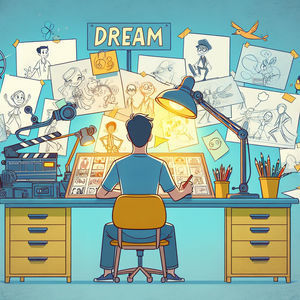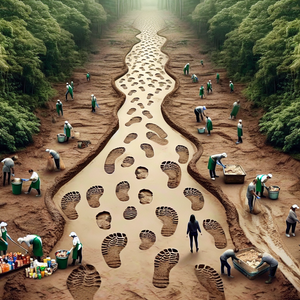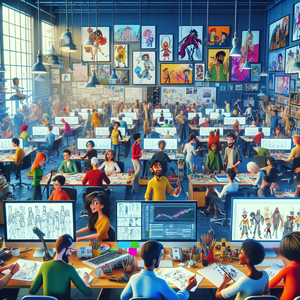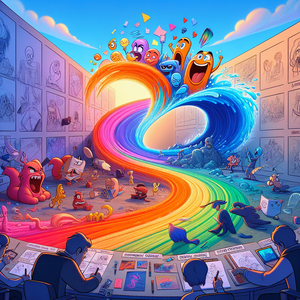
Unlocking Your Dream Career: A Guide to Job Roles and Application Strategies at Pixar Animation Studios
Securing a position at Pixar Animation Studios, a dream destination for many aspiring animators and creatives, involves more than just talent; it requires persistence, strategic planning, and a multifaceted approach. This guide delves into the varied pathways and insights necessary to navigate the competitive hiring process at Pixar. From foundational animation training at art schools to crafting an outstanding portfolio and utilizing innovative application strategies, the journey to Pixar is as creative as the films themselves. Art schools provide essential training in animation basics and portfolio development, but building a strong network and industry connections is equally crucial, as highlighted on platforms like Quora. Personal success stories, such as those of students who adopted innovative approaches to stand out, demonstrate that creativity must extend beyond art to the application process. Resources like Career Karma stress the importance of a unique resume and cover letter, while forums like Reddit and personal blogs emphasize continuous skill development and learning. This guide underscores the need for a comprehensive approach: developing technical skills, building a professional network, and showcasing a distinct creative voice. By incorporating these insights, aspiring Pixar employees can better navigate their path to a career at one of the world's leading animation studios.
Job Summaries:
Animator:
- Animators at Pixar bring characters to life, working closely with directors to capture the vision for each scene using software like Autodesk Maya.
- A bachelor's degree in animation or a related field is typically required, along with a strong portfolio.
- Excellent timing skills and attention to detail are crucial as animators convey emotions that drive the narrative.
Storyboard Artist:
- Storyboard artists create visual scripts to guide the film's production.
- They translate written scenes into image panels, requiring strong cinematic understanding and drawing skills.
- A degree in fine arts or animation and storyboarding experience is often required to ensure narrative clarity and continuity.
Character Designer:
- Character designers develop the look and personality of characters, requiring artistic ability and creativity.
- They collaborate with modelers to maintain character consistency throughout the film.
- A background in graphic design or illustration is typically required to create memorable characters that resonate with audiences.
Lighting Artist:
- Lighting artists create ambiance and mood through light manipulation, enhancing storytelling.
- Essential skills include color theory and lighting software proficiency.
- A degree in animation, digital art, or related fields is often required to ensure each scene's visual impact.
Technical Director (TD):
- TDs solve complex technical challenges in animation, focusing on aspects such as rigging and rendering.
- A strong background in computer science and animation is required, with expertise in software like RenderMan.
- TDs ensure the final product aligns with creative vision and technical functionality.
Production Coordinator:
- Production coordinators manage film logistics
- Coordinating between departments
- Maintaining schedules
- Organizational and communication skills are necessary
- Background in film production or management often required to keep projects on track
Visual Effects Artist:
- Visual effects artists create special effects that enhance storytelling.
- Requiring skills in computer graphics and visual effects software.
- A background in physics and computer graphics is essential.
- Integrate realistic effects seamlessly into scenes.
Art Director:
- Art directors oversee a film's visual style.
- Leading teams and making design decisions to align with the overall vision.
- A degree in animation or fine arts is typically required.
- Extensive experience in art and design is typically required.
- Define the film's aesthetic identity.
Modeling Artist:
- Modeling artists create 3D models from 2D designs.
- Requires skills in sculpture and attention to detail.
- A degree in 3D modeling, animation, or digital art is often required.
- Provides the foundation for the film's visuals.
Texture Artist:
- Texture artists add realistic textures to 3D models, enhancing visual richness.
- Proficiency in software like Adobe Photoshop and Substance Painter is essential.
- A background in digital art or graphic design is typically required to add depth to each frame.
To succeed in landing a job at Pixar, applicants should focus on building a strong portfolio, networking, and continuous learning. Incorporating personal stories or innovative strategies from successful applicants could offer additional insights. Including statistics on success rates, salary ranges, and educational backgrounds could further enhance the guide's value. Regular updates and expert insights will ensure the content remains relevant and credible, providing aspiring Pixar employees with the tools they need to unlock their dream career.
Explore More Jobs

